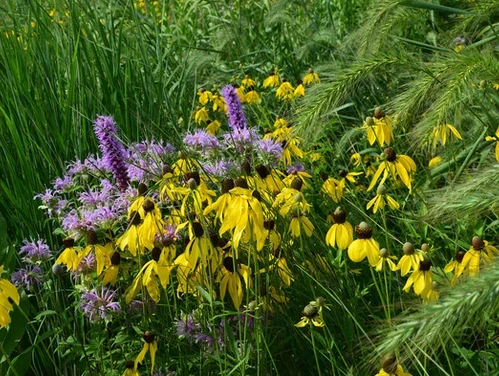Sometimes, places just feel larger than they are, and White Horse Access is one of those places.
Sitting just five miles east of Black Hawk Lake in southeast Sac County, White Horse Access was initially created to provide paddlers access to the Raccoon River. Over time, parcels along the river were added giving the area its unique question mark shape.
The river slices through White Horse naturally segmenting the area, which allows for more users than other areas of similar size.
“It’s been nice to expand this area for people who don’t have access to this type of habitat,” said Clint Maddix, wildlife biologist with the Iowa Department of Natural Resources Black Hawk Unit.
The habitat is different than much of Sac County. White Horse’s 613 acres is roughly half in timber, with less than 20 percent in prairie. There are 35 acres of old gravel pits plus a number of river oxbows – four of which were restored in 2020 as part of a federally endangered Topeka shiner habitat project – and, of course, the Raccoon River.
Two-thirds of White Horse’s acreage have been added since 2015. Over the past decade, the Black Hawk Unit has been targeting invasive trees, like honey locust, honeysuckle and buckthorn, for removal, and to reconstruct prairie on some of the small fields that had been cropped.
The tree component depends upon elevation – cottonwoods and silver maples in the floodplain; higher elevation is mostly mature bur oaks, with some basswood, cherry, bitternut hickory and other species mixed in.
Walking through the waist-high vegetation that served as a fire break extending into the timber earlier in the spring, Maddix passed by a few young oaks here and there. “That’s what I like to see, if I had a hundred out here like that, I’d be happy,” he said of the poll sized 20-foot-tall young oak.
The initial 208 acres of White Horse has a forest stewardship plan, which will be amended to include the additional forest acres. The amendment will include a plan for direct nut seeding of oaks and walnuts into small portions of the ag fields and to continue to battle the invasives.
One of the reconstructed prairies is visible from the road off the northeast corner of the area. With close to 100 different plant species in the mix, the four-year-old prairie has come in to its own after it was burned this spring.
On this late July morning, much of the young prairie was in bloom - gray headed coneflower, wild bergamot, hoary vervain, white prairie clover, stiff goldenrod, golden Alexander, rattlesnake master, prairie blazing star, cup plant, rosinweed and more. Bees and butterflies were bounding from flower to flower.
“The burn did the prairie wonders,” Maddix said.
There are some small corn and bean food plots that are included in the long-term area management plan.
About dead center of White Horse, near the railroad tracks, is the large sunflower field. Often a popular place to take pictures when the flower heads are in peak bloom, the field will begin hosting mourning dove hunters from around the area on Sept. 1.
Access to the gravel pits is from a gravel lane that leads to a large parking area with a gravel carry down ramp for canoes, kayaks, paddle boards or small “bass buggies.”
The main pit is around 21 acres and offers open water and ice fishing, in addition to paddling. A few ponds are hidden out of site, but can be seen from the aerial maps online. A low diversity prairie mix was seeded on the sandy gravel site. The gravel pit section offers hikers an opportunity to explore the area on old quarry lanes.
White Horse Access is home to some less common wildlife species, including prairie skinks, smooth green snakes, and, in the river, some threatened mussels. A mudpuppy was reported here. Portions of the timber have been used as survey sites for bats.
An active railroad line cuts through White Horse diagonally and is private property.
